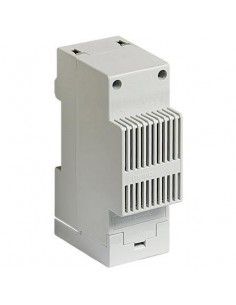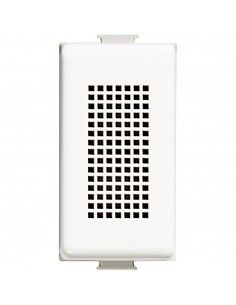- ELECTRICAL NEWS
- 0 likes
- 3533 views
- 0 comments

Ringtone and Buzzer: Differences and Characteristics
The horns can be of two types: ringtone and buzzer. Let's see together what differences exist between the two devices and in which contexts they are mainly used.
Ringtone Characteristics
The ringtone is the most well-known and used acoustic signaller in homes as a classic house bell. There are different voltages for ring tones, including 12 V, 24 V and 230 V models. Their peculiarity lies in the ability to emit distinctive sounds, from the simplest ones such as the "Drin" to the two-tone ones such as the "Din Don", making them immediately recognisable.
The Role of the Buzzer
The buzzer is characterized by its distinctive sound which resembles a buzz. This type of horn, although it produces a less "musical" sound compared to the ringtone, is effective in terms of volume and can be heard even from significant distances. At one time, for example, intercoms were often equipped with buzzers. Beyond residential use, the buzzer is used in specific applications such as alarm signals in bathrooms designed for people with disabilities, as well as in environments such as hospitals, clinics and other healthcare facilities.
Technological and Usage Differences
Both types of alarms can be classified as electronic or electromechanical. The difference lies in the way in which they produce sound: electronic devices through a signal emitted by a card and reproduced by a speaker, while electromechanical ones generate sounds mechanically, for example through an eardrum, but always activated by an electrical impulse.</ p>
Conclusions: Which Warning Device Should You Choose?
- Ringtone: Preferable for residential applications, available in various voltages and sounds. Ideal for home doorbells thanks to its range of recognizable sounds.
- Buzzer: Recommended for professional contexts such as hospitals or for specific signals such as alarms in areas with special requirements. Distinguishable by its buzzing sound and its efficiency in terms of volume at a distance.
The choice between ringtone and buzzer depends mainly on the application environment and the specific acoustic signaling needs.
The choice between ringtone and buzzer is essentially based on significant differences and distinct characteristics that these devices present. Understanding these aspects is essential to optimize the user experience in the desired context.
Different environments, different ringtones
The configuration of the ringtone system can vary significantly depending on the size and distribution of the spaces. In a large apartment, it becomes functional to distribute multiple ringtones in strategic points to ensure the effectiveness of the sound signal.
- Installation in the living area and sleeping area.
- Different ringtones for the main entrance and the tavern.
How do you connect the ringtone and buzzer correctly?
The process of installing and configuring ringtones and buzzers is not complex, but requires attention to detail to ensure optimal operation. Understanding the difference between the two devices and their correct installation are essential to avoid misunderstandings and ensure a satisfactory user experience.
In conclusion, we recommend that you delve deeper into the topic through additional content available on our Youtube channel. Among these, you will find a detailed guide that illustrates step by step how to correctly connect the ringtone and buzzer, a practical complement to this article to ensure the best possible experience.








Comments (0)